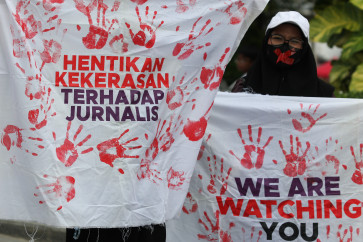Popular Reads
Top Results
Can't find what you're looking for?
View all search resultsPopular Reads
Top Results
Can't find what you're looking for?
View all search resultsLetters: Save coral reefs
Three weeks ago, Reef Check Foundation Indonesia received a lot of reports from fisherman, dive operators and colleagues about the "white" coral around Bali
Change text size
Gift Premium Articles
to Anyone
Three weeks ago, Reef Check Foundation Indonesia received a lot of reports from fisherman, dive operators and colleagues about the "white" coral around Bali. This prompted us to do a rapid survey, the result of which was posted in this article. The survey was done early June 2009.
Our survey focused on measuring the extent of the bleaching, so we did not measure the white/predatory scars from Drupella snails or other predators as part of our survey. To the trained eye, this is not something difficult to distinguish. I agree that predatory scars result in dead coral, unlike bleaching.
The last bleaching recorded in Bali was in 2003 on the Ngurah Rai reef. At that time, rapid surveys on other places in Bali and our network found no bleaching in other places, so it was likely to have been localized bleaching.
From our survey this year however, we found it covered quite a large area: from Pemuteran (not on the Biorock Reef but the reef adjacent to it, and the data we had revealed 10 percent bleaching) up to Amed. Prior to this, we also had reports from Raja Ampat of slight bleaching in April. Recently, we received reports from Bali Barat National Park, Padang Bay, and even Karimun Jawa and Aceh, so we don't think this is localized bleaching.
Lots of institutions will work hand in hand to measure the extent and severity and the recovery from this event. Most of us will be using one of the methods that Jamie Oliver, Paul Marshall and Lara Hansen wrote with me (the global bleaching monitoring protocol) for rapid assessment (the extent and severity) and using the IUCN resilience method to measure the recovery.
The NOAA HotSpot satellite imagery available online for public use is set on a resolution of 50 by 50 km. which is why some of bleaching cannot be detected, like in 2003 and this year's bleaching. However, the timing of the bleaching is happening at the "right time". In the NOAA annual temperature chart, May and June are, in fact, one of the warmest times of the year, the other time being in November and December, but the rainy season helps to "cool" the temperature then.
Naneng Setiasih
Denpasar










